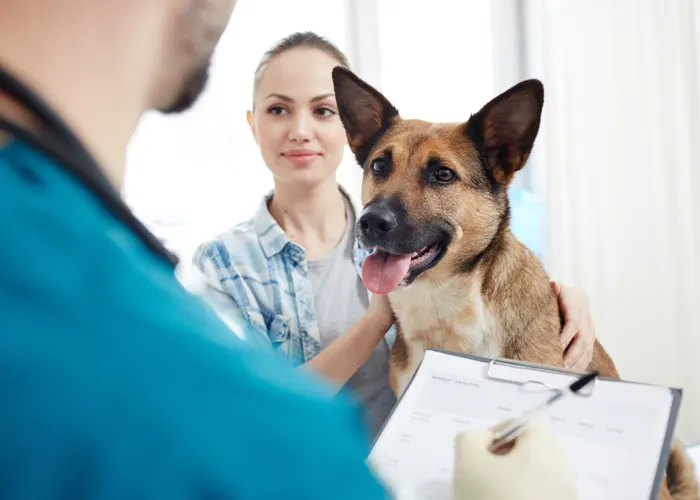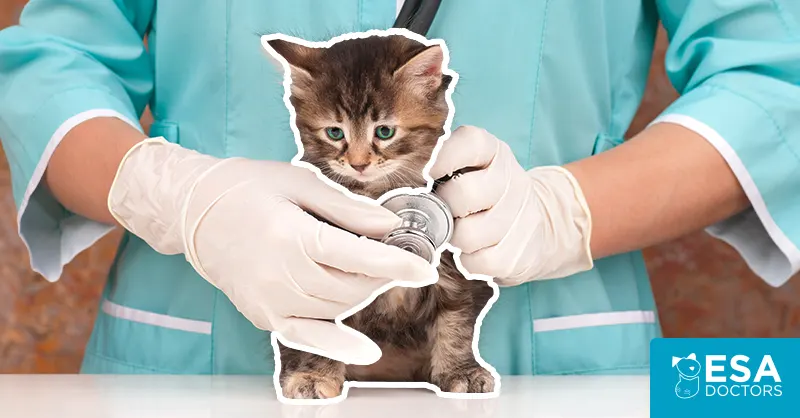This article was last updated on June 5, 2024.
This page contains insurance links that may provide us compensation when you click or make a purchase, at no cost to you. All opinions remain our own.
A comprehensive pet health insurance policy covers two main things: accidents and illness. If you’re looking to get routine and preventive care costs covered, consider the insurance provider’s add-on, usually called “Preventive Care” or “Wellness Plan.” We’ll help you choose pet insurance that makes the most sense for your pet.
As a general rule of thumb, here are the things you need to know about most pet insurance plans on offer:
Consider what you need covered and whether you have another type of insurance
To compile this overview of insurers, we evaluated each provider based on:
- Availability of illness insurance for older animals
- Customer ratings from verified, publicly available data on different review sites
- Whether a 24/7 or live vet chat is included in the policy
- How long the money-back guarantee and waiting periods are
Pet Health Insurance Providers – Comparison
The main components of pet insurance: Accidents and Illness
Accidents AND Illness: If you want your pet to have both accident and illness coverage, you should insure them before they turn 15. They’ll stay insured on the same policy even after they reach 14 or 15, but if you start the policy after this age, your coverage options will be limited. Some providers sell these policies separately, some offer bundles, and some only offer one or the other, depending specifically on your animal’s health.
Pet-only Insurer or Insurance Package: If you already have an existing insurance policy, be it home, auto, or life (like Costco), there might be advantages in adding a pet policy to your insurance package. Alternatively, if you’re looking for a more niche, focused experience where the staff is focused exclusively on your animal’s wellbeing, an insurance company that only offers pet insurance (like Prudent Pet) may be right for you.
Breed restrictions: Most policies don’t have breed restrictions! But that doesn’t apply to animals that are mixed species, part-domesticated and part-wild. On the other hand, when considering things like coverage for your dog biting someone, that falls under renter or homeowner insurance, and in that case, there are breed restrictions more frequently.
Pre-existing conditions are pre-existing if present in the last year
Under most insurance policies, conditions are considered no longer pre-existing if cured, and symptoms and treatment are free for 365 days. This is a very general blanket understanding of how pre-existing conditions can be covered under an insurance policy. Simply, if your animal, over the last 365 days, no longer exhibits any symptoms of the condition and is not being treated for the condition, then the condition would be covered should it appear again.
Exception (= not covered): There are specific conditions that don’t qualify for coverage, even after the symptom- and treatment-free 365 day period. For dogs, this usually comes with the exception of knee and ligament conditions. If a knee or ligament condition occurs before the coverage effective date or during the 180-day waiting period, any related future events won’t be covered. Take a look at Spot’s sample policy for an example of the “cured condition eligibility” policy.
Exception to the exception (= covered): One thing that is often covered, even though it may be pre-existing, is hip dysplasia. While many plans make this exception, be sure to check with your specific insurer.
Waiting Periods: Winners and Losers
Overall, Embrace (and USAA, which provides pet insurance through Embrace) has the shortest waiting period, with Accident coverage taking effect immediately and Illness coverage after 14 days. Plus, the 6-month waiting period for orthopedic conditions like hip dysplasia can be reduced with an orthopedic exam by a vet. If you think your animal might be prone to injuries or are worried about external risks to their health, this could be the right option for you.
While Spot and ASPCA both have 14-day waiting periods for Accident coverage, longer than some competitors, their illness and orthopedic waiting periods are only 14 days, beating the competitors by a long shot. If you want to minimize the time between your payment and the beginning of the policy’s coverage for all conditions, these two are the best options.
Healthy Paws and Nationwide have the longest waiting periods for orthopedic condition coverage, and Nationwide has the added downside of only guaranteeing money back for 10 days, unlike most competitors who have a 30-day guarantee.
Hip Dysplasia Coverage (Dogs only) – Comparison
Preventable conditions are inconsistently covered
One of the most difficult things to compare across plans is which preventable conditions are covered. Some insurers consider accidents to be preventable, like ingestion and vomiting, while others limit preventable conditions to things like Lyme disease, parasites, and more. Keep in mind what risk factors are around your specific living area (which kinds of parasites, where they might come from, how frequently your animal is exposed to them), and ask the insurer what is covered. If you have an indoor cat, popular choices are Figo and Embrace, while outdoor cats might benefit from an ASPCA plan that covers accidents and illnesses, and has good coverage of hereditary and curable pre-existing conditions.
Conditions that might exclude your animal from coverage altogether
While policies might not cover pre-existing conditions, generally speaking, you can still enroll your pet in a plan. However, some insurers (like Nationwide) might exclude your animal from coverage altogether if they have certain conditions like feline leukemia virus (FeLV). Be sure to check the details of your specific policy. If your animal already has a condition like feline immunodeficiency virus (FIV), talk to your vet to determine how they’ll support you in sending bills to the insurer (like providing documentation to the insurer to support claims and bills). For animals with pre-existing conditions, getting the most out of your insurance may come down to having a trusted vet rather than choosing the best insurance provider.

Wellness Plan add-on considerations
If you plan to add a Wellness Plan to your main policy, compare what’s covered there and how the billing works. Some companies like Trupanion don’t offer this option at all since they consider animal wellness a foreseeable expense that doesn’t need to be insured. ASPCA is a top pick for Wellness Plans for older pets, while Spot has the most customization options, and Embrace is a good choice for overall savings.
Conclusion
Different plans offer different benefits, and you know your animal best. However, when it comes to treating routine illness and unforeseen accidents, our evaluation found Spot to be the best overall insurance provider. From their reasonable waiting period to their plan coverage, availability of a 24/7 vet chat, no upper age limit, and the option to add a Wellness Plan, Spot is a well-rounded option, especially if you don’t want to spend extra time picking apart the fine print of each provider’s policy.





Leave a Comment